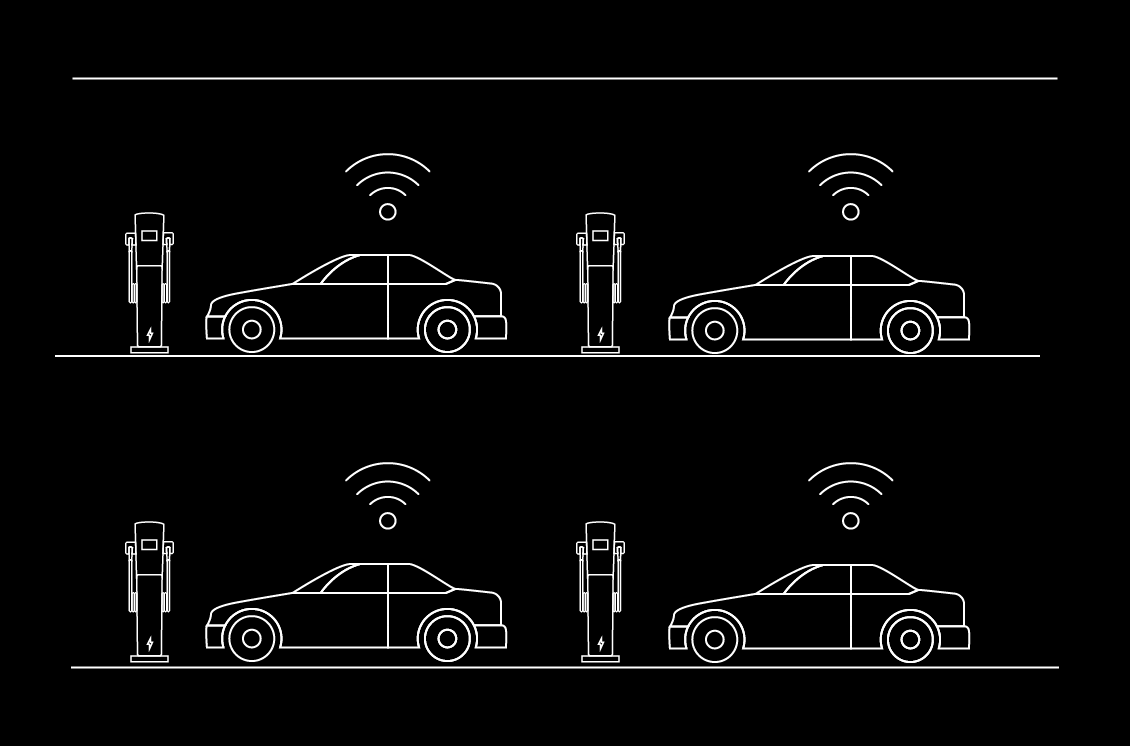Electric Vehicles Telematics is a discipline that combines telecommunications and computing and has revolutionized the way we interact with our vehicles. Thanks to this system, it is now possible to access real-time information on vehicle status, energy efficiency, and charging options. In the era of electric mobility, connectivity plays a key role in the evolution of electric vehicles.
In basic terms, vehicle telematics uses connected technology systems that gather information and data and communicate with remote devices. For your information, vehicle telematics is most commonly used in fleets business management. According to a certain research study, most fleets now use vehicle telematics, up from 48% of fleets in 2017 to 86% in 2019.
Telematics enables two-way communication between the electric vehicle and its environment, facilitating integration with other devices and services. With the introduction of a Telematic Electric Vehicle, a world of possibilities opens up to improve connectivity, efficiency, and driver experience. Vehicle telematics is undoubtedly an efficient way to manage vehicle fleets.
When integrated with OCPP backends and smart charging systems, telematics is the ideal way to ensure that vehicle fleets are optimally charged and operated, saving time and money and increasing reliability. Telematics allows us to use the information to optimize the charge of electric vehicles, especially in more complex situations such as electric fleet operations.
The Key Electric Vehicles Telematics Role In Open Charge Point Protocol
To enumerate, the Open Charge Point Protocol (OCPP) is a protocol for communication between an EV charging station and a central back office Charging Station Management System (CSMS). Using bilateral communication, OCPP is widely used to connect EV chargers and software backend systems: the client (EV charger) and the server exchange general information.
Such as meter values (Wh, W, V, etc.) and start/stop charging events. Through its smart charging functionality, OCPP also allows you to send charging commands from the OCPP server to the EV charger. One key restriction of OCPP is that it often doesn’t allow you to send details of the requested energy amount (kWh) from the charging station to the back office.
Markedly, OCPP only allows the sending of a State of Charge (SoC) that represents the current state of the vehicle’s battery in percentage (State of Charge = 80% means that 20% of the battery needs to be charged with electric energy) from certain DC chargers (fast chargers). Of course, the SoC is a vital data field, but it limits the information on the OCPP backend.
Sometimes, it may also limit a possible energy management system for smart charging functionalities. With that in mind, combining OCPP with third-party vehicle telematics is often helpful in receiving all the necessary data to make the best charging and operational decisions. So, what is the role of Electric Vehicles Telematics in great connectivity and efficiency?
How Electric Vehicles Telematics Powers Up Connectivity And Efficiency
As a method of monitoring cars, trucks, and equipment, Electric Vehicle Telematics often combines GPS Systems, Onboard Vehicle Diagnostics (OBD), wireless telematics devices, and black box technologies to record and transmit vehicle data, such as speed, location, maintenance requirements, and servicing. It also cross-references this data with the vehicle’s internal behavior.
A variety of telematics systems are available these days. You may have heard about black box telematics, smartphone-based, Bluetooth-powered, and OBD-II Port telematics devices. If the vehicle manufacturer doesn’t provide telematics software or telematics services (Without API), companies can use third-party hardware devices such as Geotab, Samsara, and the like.
In layman’s language, vehicle telematics allows us to track the vehicle’s location and understand the driver’s behavior, the vehicle’s state of charge (SoC), the energy needed for each trip, and more. With the transition to electric vehicles, we see another acceleration of telematics adoption. And as such, we expect more futuristic innovations to help drive this sector.
The main contributors are as follows:
- Electric Vehicle Drivers rely on the range more than ever before. Having the most recent insights that provide details on “what is happening inside the car” helps them to make better decisions on when and how to charge their vehicles.
- Fleet Operators must manage several objectives simultaneously: on-time departure, long battery and vehicle life, and low energy consumption costs. Doing this blind is close to impossible. Vehicle telematics helps in this respect.
- Charging Stations and vehicles are connected during the charging process. However, few hardware manufacturers have implemented communication standards such as ISO 15118. Hence, the charging stations often cannot read vehicle data like the SoC. Even if they communicate with each other, vehicle data is often missing before and after the charging sessions.
In these cases, telematics is possible through a small device that connects to the vehicle, extracting all of the vehicle’s data. In addition to the hardware, the algorithm used for GPS logging is another critical factor because it impacts the quality and accuracy of the data. That being said, EV Telematics is a great tool for connectivity and efficiency in the following ways:
1. Smart Connectivity
Thanks to this system, intelligent connectivity transforms the driver experience in electric vehicles. This technology enables seamless communication between the vehicle, the driver, and the environment. Electric vehicle drivers can easily access real-time information on vehicle status by integrating Navigation Systems, voice assistants, and mobile applications.
As well as nearby charging points, traffic, and road conditions. It also facilitates efficient route planning and optimizes energy consumption. With smart connectivity, EV drivers enjoy a more convenient, safe, and efficient commuting experience. Ampcontrol is a smart charging control system that uses OCPP and can integrate seamlessly with a vehicle telematics system.
2. Energy Efficiency Optimization
Through real-time data collection and analysis, telematics technology empowers accurate monitoring and control of energy consumption in electric vehicles (EVs). Telematics systems offer comprehensive insights into driving efficiency, battery charging patterns, and strategies to optimize performance. Moreover, they facilitate intelligent energy management.
They also enable EV Fleet Charging scheduling during off-peak hours and seamless integration with the grid. Electric Vehicles can extend their range and significantly reduce their environmental impact by harnessing the power of telematics. It’s pivotal in enhancing the efficiency and sustainability of EV fleets by paving the way for greener and more connected transportation.
3. Real-Time Monitoring
Through the connection of integrated data and sensors, detailed vehicle performance information such as battery status, energy consumption, and location is collected in real-time. This gives drivers and fleet operators complete visibility of their vehicles, enabling them to make informed decisions and improve operational efficiency.
It also facilitates remote problem diagnosis and proactive maintenance, ensuring optimal performance and minimizing downtime. The real-time monitoring and control capability provided by this approach is critical to maximizing the efficiency and reliability of electric vehicles.
4. Electric Vehicle Safety
Safety in electric vehicles is a primary concern, and telematics plays a vital role in protecting the driver and passengers. Thanks to the telematics systems integrated into electric vehicles, data can be collected and analyzed in real-time, enabling rapid detection and response to risk situations. Telematics provides vehicle information like location, operating status, etc.
Plus, it shows driving parameters, preventing dangerous behavior, and taking preventive measures. It also enables emergency communication, automatically notifies support services, and provides vital data for a quick and efficient response. In other words, it improves electric vehicles’ safety by providing constant vigilance and effectively responding to potential risks.
5. Revolutionary Charging System
As we mentioned, Open Charge Point Protocol (OCPP) has become the go-to standard for most charging applications. Leading charging station manufacturers and software developers use OCPP to communicate between a charger and a central system. Most hardware providers use OCPP 1.6, but hardware manufacturers plan to transition to OCPP 2.0.
Using bilateral communication, OCPP connects electric vehicle (EV) chargers and software backend systems. The OCPP client (EV charger) and OCPP server exchange general information such as meter values (Wh, W, V, etc.) and start/stop charging events. It’s good you learn how to set up your charger with an OCPP backend and start and stop a charging session.
As well as send meter values, use smart charging capabilities during charging, and troubleshoot OCPP messages when having charging issues. This is especially important for those looking toward a more connected and efficient future — while combining OCPP with third-party vehicle telematics.
Overall, receiving the necessary data to make the best decisions is often helpful.
Looking Toward A More Connected And Efficient Future
Telematics has revolutionized electric mobility, and its influence remains paramount in shaping a more connected and efficient future. With technological advancements, electric vehicles can seamlessly integrate with intelligent infrastructures and systems. While at the same time enabling effective management and optimization of energy consumption.
As well as real-time monitoring and efficient EV Charging Optimization strategies. This system empowers the collection and analysis of data, leading to continual improvements in the design and performance of electric vehicles while fostering the development of cutting-edge solutions that prioritize safety and comfort for drivers and passengers alike.
This technology propels a transformative movement in electric mobility, fostering an interconnected, sustainable, and efficient future. For example, just like we aforementioned, Ampcontrol is a cloud-based software that seamlessly connects to charging networks, vehicles, fleet systems, and other software systems. No hardware is needed, just a one-time integration.
Conclusion:
Vehicle Telematics has been playing an important role in IC vehicles already. On the one hand, telematics comes into the picture when fleet operators need to make more informed decisions regarding the charging of electric vehicles.
On the other hand, telematics can also be combined with fleet information, such as the departure or arrival times of buses, trucks, or cars.
To take full advantage of the impact of telematics on electric mobility, it is important to consider some practical actions. First, electric vehicle manufacturers should integrate advanced telematics systems into their models, ensuring seamless and reliable communication between the vehicle and the driver. It is essential to promote education and awareness of telematics.
Related Resource: The Best Battery Management System Plus EV Charging Points (UK)
Also, note the benefits of telematics in electric mobility, both among drivers and at the business level. This will help to encourage the adoption of connected electric vehicles and to use telematics functionalities optimally. There is a need to invest in smart infrastructure and charging networks ready to support telematics communication for electric vehicles.
Finally, governments and relevant organizations must establish regulations and standards that promote the interoperability and safety of telematics systems in electric vehicles. Implementing these measures will build a more connected and efficient future in electric mobility. Be that as it may, let us know your take on Electric Vehicles Telematics in our comments section.






I was suggested this web site by way of my cousin. I’m
no longer sure whether this publish is written by means of him as no one else recognise such distinct about my trouble.
You are wonderful! Thanks!
I’m no longer sure where you’re getting your info, however good topic.
I must spend some time learning more or figuring out more.
Thank you for wonderful info I used to be in search of
this information for my mission.
Comments are closed.